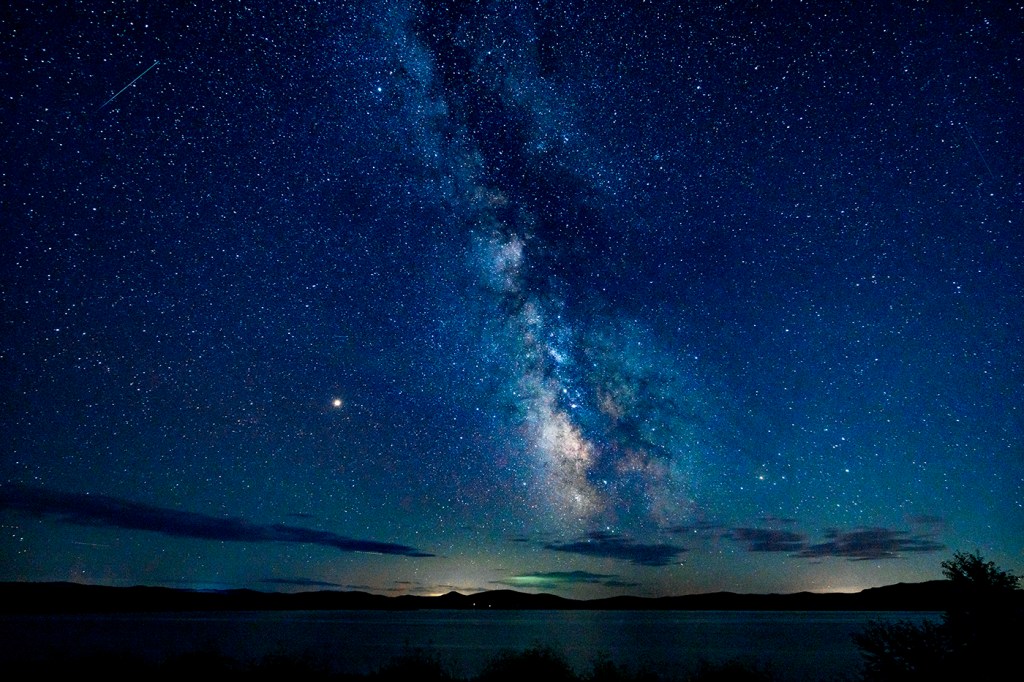Miss looking up and seeing stars? Light pollution is becoming more and more of a problem, expert says

Look up in the night sky and what do you see? Probably a whole lot of light — and not from celestial bodies.
The loss of our dark skies to lights from cities and satellites is becoming more and more apparent, to the point that experts have a name for it. “Noctalgia” is the grief that comes with no longer being able to look up and see a number of stars at night, according to Space.com.
The growing effects of this are becoming more and more apparent. Northeastern University associate teaching professor Alessandra Di Credico sees this when she teaches astronomy: Many of her students say they’ve never seen any part of the Milky Way.

“It is a big loss,” she said. “Think about the experience of looking at the dark sky and the mystery and just trying to understand our place in the solar system, in the world. This all comes when you are able to confront this (dark sky) — and when that is erased because you only see a kind of flat, let’s say yellowish or whitish sky, that is taking away a very deeply human experience. I feel the loss of a deep connection to the universe that we used to have generations ago.”
Our dark skies have been under threat since the Industrial Revolution when electricity became commonplace. Over time, keeping lights on throughout the evening has become more and more common — particularly in urban areas — as a matter of safety. The advent of LED lights, which can be kept on at all hours, have only made things worse.
This light pollution spills over even into more suburban areas since light travels far. As a result, even people in more isolated areas can see a glow when they look out on the horizon at night.
Even the most remote places in the world are experiencing this: Space also reports that the darkest parts of the ocean and desert are 10 percent lighter than they were 50 years ago. Part of this is due to satellites, Di Credico said, which are “omnipresent” and unlikely to stop being launched anytime soon.
“That has completely canceled the experience of looking at stars,” she added. “Light pollution has increased with time.”
This sort of lightness also complicates amateur stargazing and astronomy research, plus it can disrupt the behavior of animals. DarkSky International, an organization dedicated to reducing light pollution, says artificial light can disrupt the mating and hunting patterns of nocturnal creatures that usually operate by night.
But is there an answer to getting our skies back? Di Credico doubts there’s a simple solution, especially in cities, but there are some options, including city limits on what times lights can be on (though Di Credico acknowledges this is unrealistic) and homeowners choosing to limit the lights on their home and not aiming them toward the sky.
Dark sky reserves are also trying to fight to keep the night. DarkSky International works with communities to reduce light pollution and helps create certified “Dark Sky Places” all over the world. There are more than 200 Dark Sky Places across 22 countries where light pollution is kept to a minimum so visitors can enjoy the stars.
Di Credico believes this can help, but only so much. Unfortunately, she doubts much can be done about satellites and other manmade objects throughout the world.
“I don’t think we’re going to win that,” she said. “Light pollution is a source of pollution like air pollution and water pollution. It’s one of the things that environmentally we should put as a priority.”
Erin Kayata is a Northeastern Global News reporter. Email her at e.kayata@northeastern.edu. Follow her on Twitter @erin_kayata.






